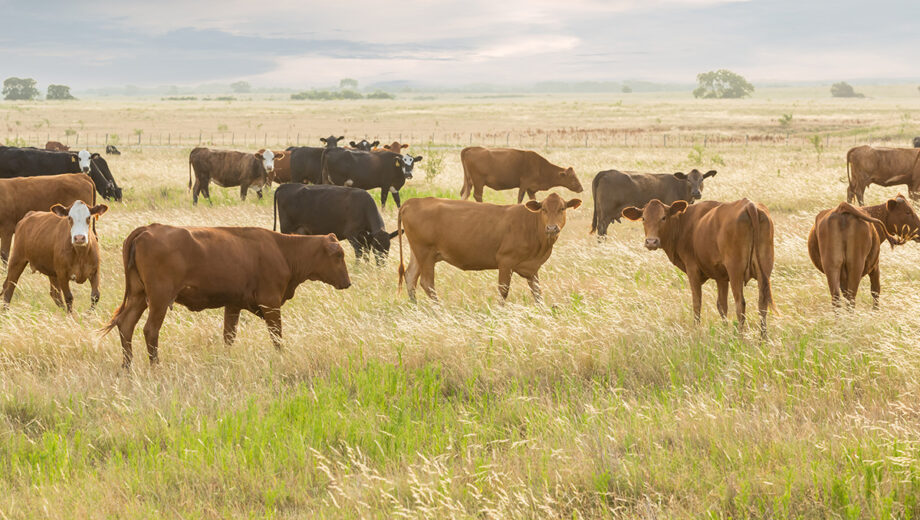
New outreach tool for conservation agriculture aims to reach farmers faster
Environmental Initiative is excited to announce the next phase of a groundbreaking project – accelerating the adoption of conservation agriculture practices. The project aims to support organizations in significantly increasing the uptake of regenerative practices by taking an intentional approach to understanding the unique hurdles, motivations, and values of “moveable middle” farmers and ranchers.
Through data-driven, tailored engagement strategies, the initiative expects to:
- Provide outreach and engagement support to organizations through in-person workshops, online workshops, and self-guided learning influencing at least 200,000 acres.
- Move ranchers representing 100,000 acres forward in their readiness to adopt conservation practices.
- Use data-driven outreach strategies in partnership with an organization enrolling ranchers to put an additional 10,000 acres above and beyond program goals into conservation practices.
Putting producers at the center
The project builds upon two years of work where Trust in Food™, a social purpose division of Farm Journal, analyzed the values, interests, and barriers to conservation agriculture practice adoption of more than 55,000 row crop farmers in Illinois, Iowa, and Nebraska. Trust in Food and members of the Midwest Row Crop Collaborative, administered by Environmental Initiative, designed an engagement strategy rooted in producer insights and tested a range of values-based messaging and creative visuals over several months.
Outreach materials were designed to support project area farmers who were “not quite sure” about the benefits of sustainability practices. Strategically designed content provided information about the benefits of various programs and practices. The engagement was available in digital and print formats and across a range of channels including radio, email, websites, and social media. The approach performed at a rate of three-to-five times benchmark, demonstrating increased interest in the information. Additionally, a longitudinal study showed that sentiment related to conservation agriculture improved measurably in the project area during the one-year span.
As part of the first phase of the project, Environmental Initiative and Trust in Food™ developed ReachFarmersFaster.org, a web-based tool to share results and provide steps to help organizations design data-driven outreach and engagement strategies that more rapidly motivate producers to connect to conservation agriculture programs and resources.
“Connection is at the heart of any action. When farmers feel heard and understand their values are reflected in a program, they are more likely to engage,” said Deborah Carter McCoy, partnership and communications director at Environmental Initiative. “We are excited to offer data-driven communications and outreach support at this time of extraordinary opportunity in agriculture.”
From row crops to ranching
The Northern Great Plains encompasses more than 180 million acres across five states – Nebraska, North Dakota, Montana, South Dakota, Wyoming, and two Canadian provinces. This vast region is crucial for biodiversity supporting numerous plant and animal species found nowhere else on earth. Ranching is an integral component of the Northern Great Plains economy, history, and culture. Maintaining a healthy ecosystem as the climate changes is essential for the lands and animals depending on them and for the ranchers who produce the foraging livestock available in the market.
Over the next 24 months, Environmental Initiative and Trust in Food™ will apply a refined methodology to enhance ranchers’ readiness for conservation practices, using proprietary tools to assess and measure progress. This approach includes a detailed analysis of ranchers’ values, barriers, and drivers, guiding the design of a 12-month outreach effort. The objective is to demonstrate how understanding the unique motivations and challenges of different farmer groups can accelerate conservation success. Readiness to adopt conservation practices will be measured again at the end of the engagement campaign.
Finally, Environmental Initiative and Trust In Food™ will work with a local organization to utilize the methodology in their conservation agriculture enrollment efforts. The organization will work closely with the project team to apply the methodology for outreach design with the goal of putting an additional 10,000 acres of grazing lands under conservation practices by mid-2026.
Findings will be added to the online tool in early 2026 to ensure the platform reflects the realities of both the row crop and ranching communities.
More workshops coming soon
Environmental Initiative is developing a series of workshop formats for professionals in conservation organizations and supply chain companies who are interested in enhancing their producer-centered outreach and engagement programs. The first in-person workshop was held for soil and water district professionals at the National Association of Conservation Districts Annual Meeting in February.
Insights from our work in Illinois, Iowa, and Nebraska will be shared and workshops will walk attendees through a process to:
- Establish outreach and communications goals.
- Understand producer audiences.
- Develop messages aligned with producer insights.
- Select ways to connect with farmers based on their preferences.
- Measure campaign success and impact.
Supplementary producer insights, workshops, and the self-guided online tool will provide additional support to producer-facing organizations at a time of significant and historic investment in conservation agriculture.
Connect with us
ReachFarmersFaster.org is available now for organizations to apply the methodology and explore insights from our work with row crop producers in Illinois, Iowa, and Nebraska. Explore the step-by-step process and download worksheets to optimize your outreach.
Contact Deborah Carter McCoy with workshop enquiries, if you are interested in supporting this work financially, or to learn more about the project.